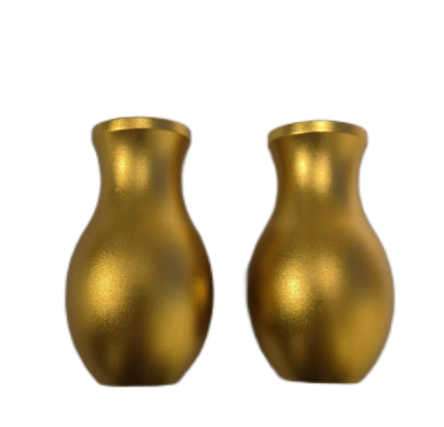When it comes to adding a sense of sophistication and luxury to metal surfaces, anodized gold and gold-plated finishes are two popular options. These finishes are commonly used in the production of high-end jewelry, electronics, and architectural hardware. However, despite their similar appearance, anodized gold and gold plated finishes are actually quite different in both application and performance.
Let’s start with the basics.
Anodizing gold refers to the process of creating a layer of golden oxide on the surface of the metal through an electrochemical process called anodizing. This process increases the thickness of the natural oxide layer on the metal, giving it a durable and corrosion-resistant surface. Gold plating, on the other hand, involves depositing a thin layer of gold on a metal surface through electroplating, where an electric current is used to coat the metal with a layer of gold.
One of the main differences between anodized gold and gold plated finishes is their durability. Anodized gold has a thicker oxide layer that is more resistant to wear, tear, and corrosion than gold-plated finishes, which can easily wear off over time. This makes anodized gold a more practical and longer-lasting choice for items that are handled frequently, such as jewelry and hardware.
Another difference between the two finishes is their appearance. Anodized gold has a matte, non-reflective surface with a warm, subtle hue, while gilt gold has a shiny, reflective surface that is very similar to solid gold. This difference in appearance may come down to personal preference, as some may prefer the rich shine of a gold-plated finish, while others may prefer the understated elegance of anodized gold.

Anodized gold and gold plated finishes also differ in application. Anodizing is typically used on metals such as aluminum, titanium and magnesium, while gold plating can be applied to a wider range of metals, including copper, silver and nickel. This means that anodized gold may have a more limited choice in terms of the types of metals it can be used on, whereas gold plating offers more versatility.
There is also a cost difference between anodized gold and gold plated finishes. Anodizing is generally a more cost-effective process than gold plating, making anodized gold a more economical option for those wishing to achieve a gold finish on metal items.
Original Source: https://www.longpanmetal.com/news/what-is-the-difference-between-anodized-gold-and-gold-plated/
Media Contact
Company Name: LongPan Hardware Machining
Email: Send Email
Country: China
Website: https://www.longpanmetal.com/
